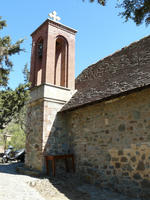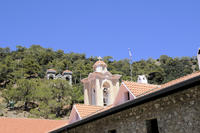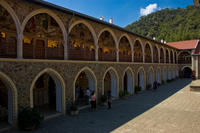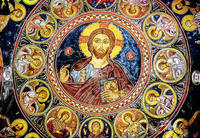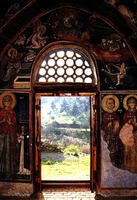You are in: Europe -> Cyprus -> Painted Churches in ... , and traditional search or Image Gallery will yield results of this site only
Painted Churches in the Troodos Region
| Site number: | 351 |
|
| Type of site: | Cultural | |
| Date: | Byzantine era | |
| Date of Inscription: | 1985, 2001 | |
| Location: | Europe, Cyprus, Troodos Region, Districts of Nicosia and Limassol | |
Up to 75 images are shown here. Click on each for more details or on Image Gallery for more images.
| Description: | This region is distinguished by one of the largest groups of former Byzantine Empire’s churches and monasteries. Included in the World Heritage List is the assembly of 10 monuments (all lavishly decorated with murals) that provides an overview of Byzantine and post-Byzantine painting in Cyprus. Each monument differs, as they range in size from small churches, with rural architectural style contrasting to their highly developed decoration, to large monasteries such as that of St John Lampadistis. --WHMNet paraphrase from the description at WHC Site, where additional information is available. | |
| Troodos is the biggest mountain range of Cyprus, located in the center of the island. Troodos' highest peak is Mount Olympus at 1,952 meters. Troodos mountain range stretches across most of the western side of Cyprus. There are many famous mountain resorts, Byzantine monasteries and churches on mountain peaks, and nestling in its valleys and picturesque mountain villages clinging to terraced hill slopes. There are 9 churches and 1 monastery in Troodos that are counted among UNESCO's World Heritage Sites and several other monasteries, of which the Kykkos monastery is the richest and most famous. The nine Byzantine churches are: Stavros tou Ayiasmati, Panayia tou Araka, Timiou Stavrou at Pelendri, Ayios Nikolaos tis Stegis, Panayia Podithou, Assinou, Ayios loannis Lampadistis, Panayia tou Moutoula, Archangel Michael at Pedhoulas. The area has been known since ancient times for its mines, and in the Byzantine period it became a great centre of Byzantine art, as churches and monasteries were built in the mountains, away from the threatened coastline. --Wikipedia. Text is available under the Creative Commons Attribution-ShareAlike License. | ||
| Source: | http://whc.unesco.org/en/list/351 | |
| Reference: | 1. UNESCO World Heritage Center, Site Page. | |



